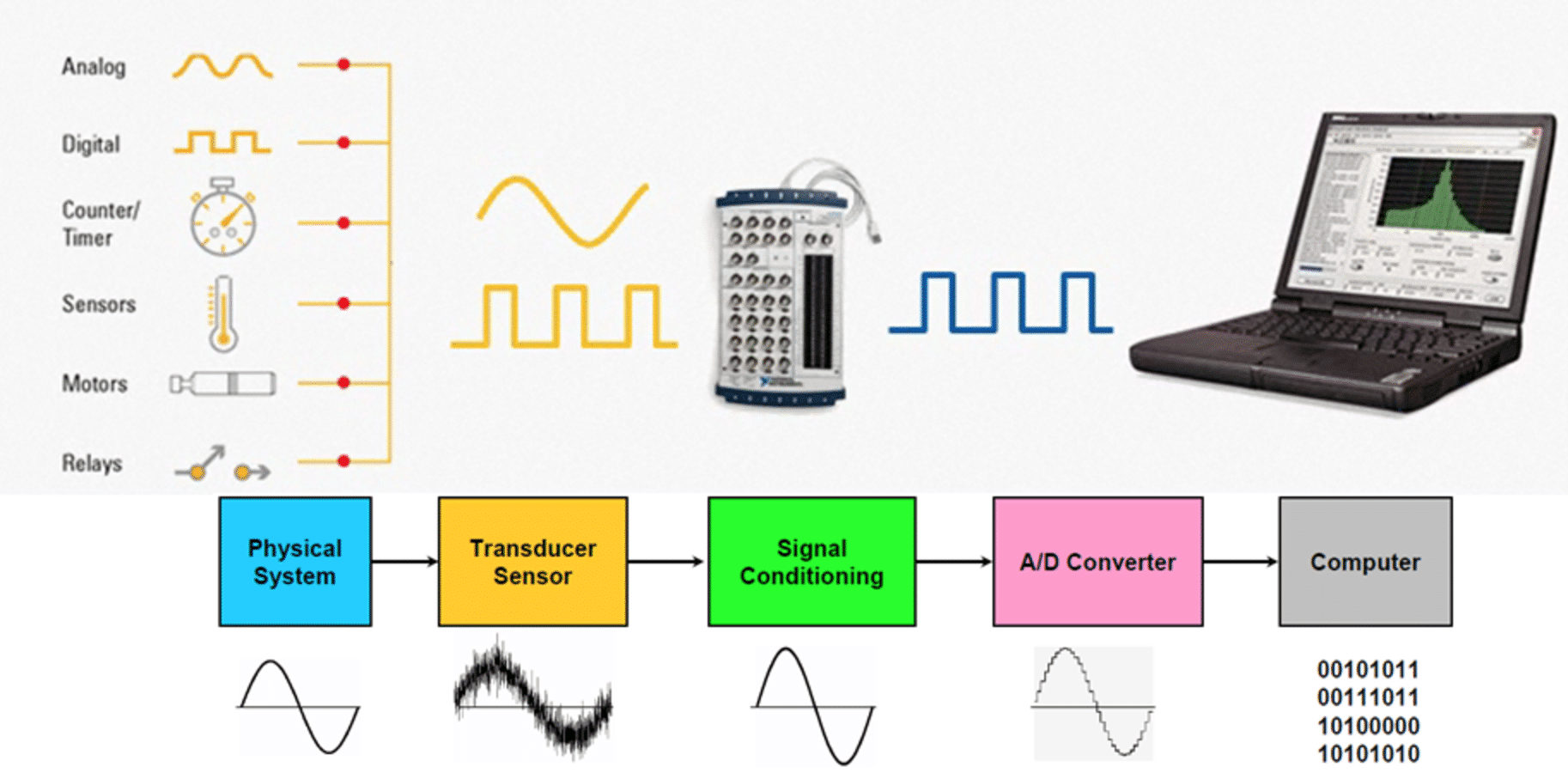
At their most basic level, data acquisition systems are systems that collect and aggregate data on an external physical system. Whilst much thought is often put into the choice and design of sensors for DAQ systems, less goes into the choice of the data loggers these sensors are connected to.
One of the major advances of the past few decades has been the advent of multi-channel data acquisition systems. These systems are able to accept and aggregate a variety of incoming signals, whether analog or digital, and collect them in a format which is easily accessible for external data analysis software.
The History of Multi-channel Data Acquisition
In order to understand why multi-channel data acquisition was so revolutionary when first introduced, it is worth looking at the way that DAQ systems worked before the advent of multi-channel devices. Typically, a bespoke data acquisition system was required for each piece of machinery being monitored, often with obscure and mutually incompatible hardware for each.
As such, each DAQ, and in some cases each individual sensor, was hard linked to a dedicated PC workstation. This not only meant the extra expense of running delicate and unreliable cables to numerous discrete workstations, but also required arcane, custom software to be running on each terminal also.

And of course, for systems that are inherently mobile, or operate within hazardous environments not conducive to PCs, data acquisition was almost impossible.
Multi-channel data acquisition changed this by allowing one device to collect data from a vast variety of sensors simultaneously. This had great advantages at all stages of the data acquisition system. By feeding the signals from a variety of sensors into one data collection device, DAQ systems were made significantly smaller, and could therefore be fitted to systems where space constraints previously limited this.
Multi-channel data acquisition devices also meant that one work station could easily aggregate all the data being logged from a particular system, greatly simplifying workloads and data analysis.
Choosing a Multi-channel Data Acquisition System
Today, almost all high-end DAQs for general use are multi-channel. Though each system offers its own advantages and disadvantages, one of the major distinguishing features of each is the number of channels available for data.
Some DAQ devices offer minimal channels, down to just two in some cases, and others offer huge number of inputs, with 256 channel systems becoming increasingly common.
When choosing a multi-channel DAQ, it is important to consider how many channels you are ever going to need on one device. Whilst it can be tempting to go for a large number of input channels, devices with large numbers of channels are generally expensive, and may offer far more than you will ever need.
A second factor to consider is the type of data you will be feeding to your DAQ device. Whilst most of these devices now offer both analog and digital inputs as standard, in some cases each channel is dedicated to a particular type of input, limiting your usage of each.
Only after considering these questions, and having decided the number of channels you require, should you give consideration to other features of DAQ devices, such as the ability to wirelessly upload data, or the software included with them.
